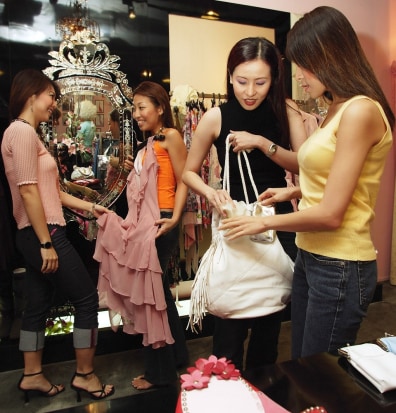There are times when looking like a tourist is smart advice — especially when an overseas shopkeeper asks if you’d like a VAT (Value Added Tax) receipt to qualify for a tax refund.

Travel abd Lesiure
Secret Celebrity Hideaways
America's Best Cocktail Bars
America's Most Scenic Roads
Coolest Disney Rides
Such rebate programs, available only to nonresidents, are commonplace in Europe. But there are a growing number of countries around the world where you can also get a refund — if you follow the right steps, beginning from the moment you make the purchase.
Slideshow: Best tax-free shopping surprises
Singapore kicked off the refund trend in Asia in 2004, and was soon followed by Indonesia, Japan, Korea, and Thailand. Unknown to many travelers, Mexico began offering tax refunds in 2008 (just a year after Canada canceled its rebate program for individual travelers).
VAT and GST (Goods and Services Tax) place the tax burden on the end consumer, chargeable in the place where the merchandise is used. In many places, purchased goods taken out of the country by nonresidents aren’t subject to the VAT/GST, which ranges from 5 percent in Japan to 25 percent in Sweden, Norway, and Denmark. Even so, you usually have to pay the tax, at least temporarily, when buying an item. That’s why you’ll need to file the appropriate papers for a refund when you’re ready to leave.
Don't miss these Travel stories
Image: Lords of the gourd compete for Punkin Chunkin honors
With teams using more than 100 unique apparatuses to launch globular projectiles a half-mile or more, the 27th annual World Championship Punkin Chunkin event is our pick as November’s Weird Festival of the Month.
Airports, airlines work hard to return your lost items
Expert: Tourist hordes threaten Sistine Chapel's art
MGM Grand wants Las Vegas guests to Stay Well
Report: Airlines collecting $36.1B in fees this year
There are procedural nuances from place to place, but the basics are the same around the world. Buy your goods from an authorized tax-free-shopping merchant. Make the minimum required purchase (as low as $17 in Argentina, as much as $300 in Australia), if there is one, and have the clerk fill out the necessary tax forms. Bring your passport for identification. At the airport, show your goods to the Customs Office before you go through security, and have your tax forms stamped. You can then pack the goods into your luggage and check in (except in Australia, which requires you to carry on your tax-free purchases, apart from wine and oversize items). After you pass through security, submit your forms at a tax-refund kiosk for an immediate refund or to have a check mailed to your home.
Beware, though, that many countries charge a commission on refunds. If you want the refund credited to your charge card, expect to pay $4 in South Africa. Israel has a sliding commission scale, ranging from as little as 5 percent to a high of 15 percent, depending on the refund amount. Mexico charges a whopping 35 percent commission.
No matter where you do your tax-free shopping, remember:
Find out the minimum purchase requirement, if any, for a single item or total amounts, as well as the step-by-step procedures. Get details on dozens of countries from tax-free-shopping operators premiertaxfree.com and global-blue.com. Look for merchants’ signs or window stickers that say Tax-Free Shopping or VAT Refunds. Shop around. A lower price at a nonparticipating merchant might be a better deal than a higher price at a participating merchant, despite the refund. You’ll almost always need to show your purchases to a Customs Officer at the airport or seaport.
A refund might not add up to much money after all is said and done. But the bottom line is whether you want that money to end up in your pocket or with the excise man.



